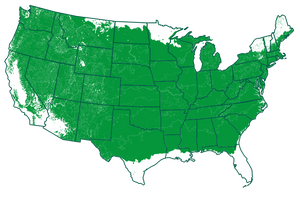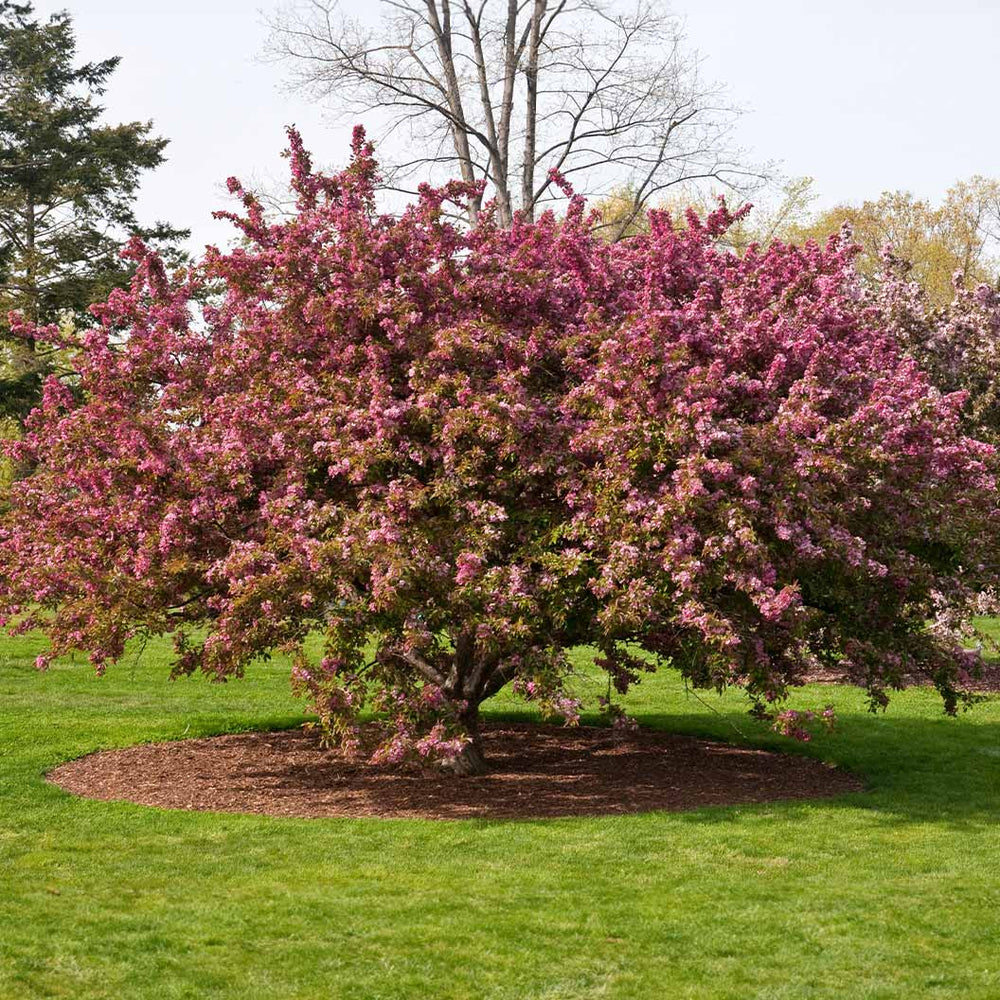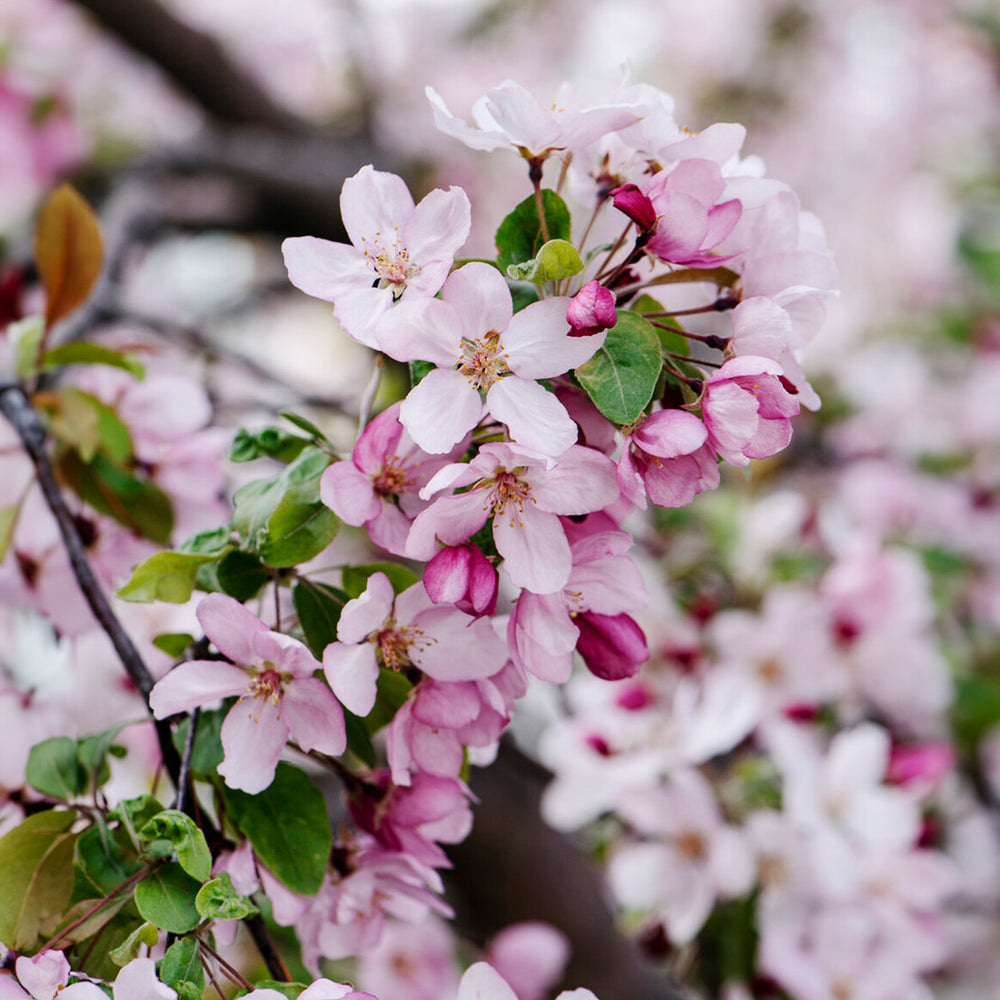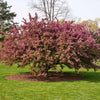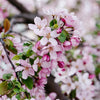* Images shown are of mature plants

Have questions? Talk with our Plant Experts (800) 973-8959
The Crabapple Tree With Four-Season Interest
The Indian Summer Crabapple is known for its single flowers that bloom heavily, covering the tree in mid-spring. The deep red buds change into many different hues of pink flowers, making every tree unique. The leaves are a purplish color in the spring before turning to medium green in the summer and orange-red in the fall.
The Indian Summer Crabapple is popular amongst birds and butterflies, bringing them in first with their flowers and then bright red fruit in the fall. While birds love the fruit, gardeners use the fruit for canning or making jellies.
The Indian Summer is a crabapple variety notable for its disease resistance. It’s extremely low-maintenance, offering a compact ornamental tree for those who want an easy-to-care-for garden or those with less than favorable conditions.
Add the Indian Summer Crabapple to your yard this season and order online today!
Pollination Info
Indian Summer Crabapple Tree Pollination
Indian Summer Crabapple Trees are self-fertile. You will get fruit with only one plant. However, adding an additional Indian Summer Crabapple Tree will drastically increase the size of your crop.
Planting & Care
1. Planting: Plant your Indian Summer Crabapple in a location that receives full sun and has well-draining soil. Ensure there is enough room for the tree's size once it reaches maturity.
Dig a hole twice the size of the tree’s root ball and mix in some compost. Plant your tree, holding the tree trunk straight as you backfill the soil. Add a layer of mulch to conserve moisture, keeping the mulch from directly touching the tree’s trunk.
2. Watering: Crabapple trees have average watering needs. Water frequently in the tree’s first year. Once it’s established, water only during periods of drought.
3. Fertilizing: Add a well-balanced fertilizer for trees and shrubs once a year in early spring.
4. Pruning: Crabapple trees require very little pruning. Avoid pruning in early spring. Remove any diseased or dead branches and any additional branches for shaping, preferably in late winter.
5. Pollination: Crabapple trees are self-fertile. No additional trees are needed to produce fruit, though additional apple or crabapple trees will increase fruiting.
Related Resources
Apple Trees: Everything You Ever Wanted to Know
Updated: February 2021 From McIntosh to Granny Smith, apples are one of the most popular fruits in the world, with growers producing more than 240 ...
Read the full article
Flowering Trees: Everything You Ever Wanted to Know
Flowering trees are one of the most wonderful signs that spring has arrived, and they make enchanting additions to the yard. You get the best ...
Read the full article
What to Expect From Your Flowers in June
What are your flowering plants doing right now? By now, your landscape is well into the growing and flowering season, no matter where you call ...
Read the full article
Shipping Details
Estimated Shipping Time: Most orders ship immediately. As noted on the website, some items are seasonal, and may only ship in spring or fall. Once your order is shipped, you'll receive an email with a tracking number.
| Amount of Order | Shipping Charge |
|---|---|
| Less than $49 | $19.95 |
| $49 + | FREE SHIPPING! |
Product Details
| Mature Height: | 15-20 ft. |
| Mature Width: | 15-20 ft. |
| Sunlight: | Full Sun |
| Growth Rate: | Moderate Growing |
| Botanical Name: | Malus 'Indian Summer' |
| Does Not Ship To: | AK, AZ, CA, HI, ID, OR, WA |
| Grows Well In Zones: | 4-8 outdoors |
| Your Growing Zone: | # |
